OSCA 1137–The little white giant killer
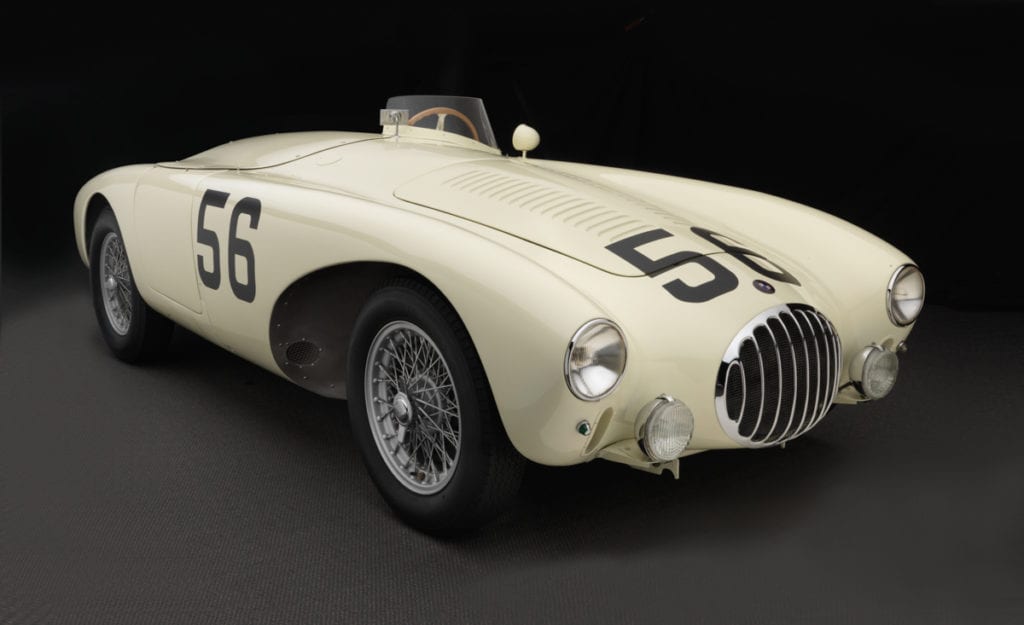
Not a snowball’s chance in hell. Or so it seemed.
Among the 63 sports cars starting Florida’s 1954 12 Hours of Sebring were proven long-distance race winners and top finishers. Lancia brought four D24s, a spare car and the boast of a 1-2 finish in the 1953 Carrera Panamericana. Aston Martin shipped in Tourist Trophy-winning DB3Ss and there were five formidable Ferrari 375s. Several Maserati A6GCS, Allards, a Jaguar C-Type and a Cunningham C-4R.
Ditto with the drivers. World Champion Alberto Ascari. Juan Manuel Fangio. Piero Taruffi. Phil Hill. Luigi Villoresi. Phil Walters. Harry Schell. Walt Hansgen. Peter Collins. The list goes on.
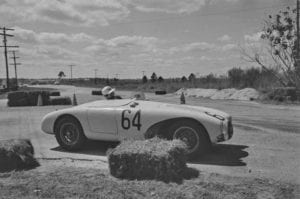
Hence the snowball’s chance for a little white OSCA MT4 — chassis 1137 — with a tiny 1.5-liter twin-cam four and a mere 130 horsepower. Granted one driver of the car was Stirling Moss, THE rising star driver in racing. He later recalled Briggs Cunningham ringing him to offer the ride. Moss replied, “‘Fantastic.’ I’d never been to America and, you know, after the war, we had nothing and you had everything. I said, ‘Terrific, I’d love to come out there and have a holiday.’ And that’s how it happened. I arrived – there’s the car, get out and drive it, you know.”
The other driver was Bill Lloyd, a winning D-Modified class driver from the U.S. Northeast. He was Briggs’ nephew and in 1953 that pair finished 5th overall and 1st in Sebring’s 1100-cc class in a different OSCA. Some reports have the OSCA being entered in 1954 “almost as an afterthought” by Cunningham. The car certainly contrasted with his other entries: the big horsepower C-4R and Ferrari 375MM. Or maybe Cunningham knew 1137’s potential when others did not.
Qualifying delivered another whack at the OSCA’s chances. While Cunningham’s Ferrari could lap Sebring’s rough 5.2-mile airport circuit in 3 minutes, 32 seconds, his OSCA needed 3 minutes, 56 seconds to do the same.
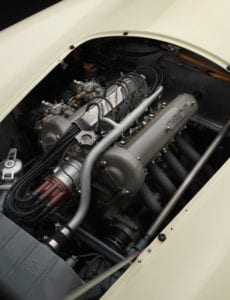
And so the contestants were flagged of at 10 am on March 7. No surprise, the Lancias and Ferraris rushed into the lead. The Astons were out quickly and then, throughout the day, the big machines faltered. Cunningham’s C-4R and Ferrari fell victim to engine ills. Two Lancias were done in by brake and gearbox problems. Slowly the field thinned — only 22 of 59 would finish — and through it all the OSCA was close behind.
It wasn’t a faultless run for the little Italian. Alfred Momo, Cunningham’s tech guru, had modified the front fenders of the OSCA to aid brake cooling, but they faded. Moss had the answer. “The brakes were worn out. To get it to slow up, you had to put the car sideways and do Christies, like in skiing, and God knows what else and just hold it in a slide.”
Moss and Lloyd managed 168 laps by 10 pm. Second place went to a Lancia D24, five laps back. Others OSCAs finished 4th, 5th and 8th, taking honors in both the 1100- and 1500-cc classes. Moss and Lloyd also won the Index of Performance. Post race Moss added, “It was a wonderful car, the most beautifully balanced. I mean, one couldn’t do what we did except with a car of that quality.”
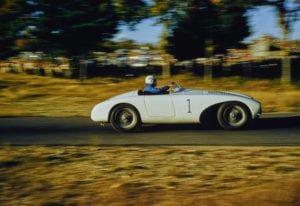
OSCA 1137 was kept busy at East Coast tracks like Thompson and Suffolk County, ultimately delivering Briggs Cunningham the SCCA’s (Sports Car Club of America) championship title in the F-Modified class for 1954. The car even scored a class win at Sebring in 1955 driven by Lloyd and George Huntoon.
A snowball’s chance indeed for the little white Sebring-winning OSCA that now resides with the Miles Colliers Collections at Revs Institute.
When you visit, you’ll note the round badge at the front of the car. Its outer circle reads “O.S.C.A. FRATELLI MASERATI BOLOGNA. Those four letters stand for Officine Specializzate Costruzione Automobili. In that circle is a version of the coat of arms of Bologna, Italy. Back where the Maserati brothers started.
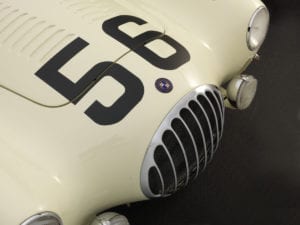
That start was in 1914 when the four Maseratis, Alfieri, Bindo, Ettore and Ernesto, founded their auto firm near the city. After creating race cars for the likes of Isotta and Diatto, they began to built them under the Maserati name starting in 1926. Their race machines were powered by 4-, 6-, 8- and 16-cylinder engines.
Alfieri died in 1932 from lingering injuries suffered in a 1927 racing accident, but the other three carried on and created a line of winning race cars, their Maserati 6CMs victorious in the Targa Florio from 1937 through 1939 and a 4CL winning in 1940. That was also the period when one of their 8CTFs won the Indy 500 in 1939 and 1940.
While the brothers played a major role in creating those race cars, the company was no longer theirs. Not as good with money as machinery, they sold out to the Adolfo Orsi family in 1937 and in 1940 Maserati automobiles was moved the Modena, where it is today.

That sale to the Orsi family brought 10-year contracts for the brothers. When that term ran out they returned to San Lazzaro di Saveno near Bologna and founded a new firm in 1947. As the Orsis owned their family namesake, the Maseratis called the new company OSCA.
They built cars that often didn’t mean a great deal in the U.S. We Yanks were into big engines — flathead Ford V-8s were king before the ’55 Chevy small-block appeared. Gasoline was cheap and plentiful and the roads were flat, wide and long. A different story in war ravaged Europe where automotive engines from 750 cc to 1.5 liters were common, even in race cars. There were classes for such race cars in U.S. road racing–F-, G- and H-Modified for cars that were 750-1500 cc–but to be honest, most of us preferred the big boomers with their V-8s and V-12s. Not so in Europe where the likes of OSCA, Gordini, Borgward and, in the early days, Porsche were highly regarded.
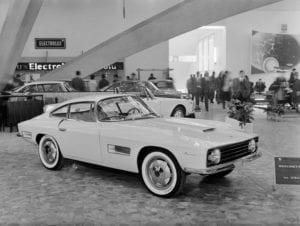
In 1963, OSCA was sold to Count Domenico Agusta who built MV Agusta Motorcycles and the company continued until it closed in 1967. In the interim, the Maserati brothers designed a grand variety of automobiles. Their best-known engines were small, aimed at the 750-cc, 1100-cc and 1500-cc classes. There was also a series of street models with a variety of cute Italian-style bodies and 1600-cc engines. Plus Formula 2 and Formula 1 machines, with a straight-6 and a formidable 4.5-liter V-12.
No lack of variety from the Maserati brothers, who were known both for the quality of their equipment and their lack of funding. Also for the class victories of their various race cars from the Targa Florio to the Mille Miglia to the SCCA’s F- and G-modified classes. The very complete website racingsportscars.com lists 59 different OSCA chassis, 953 races and 186 first place finishes – no small feat.
Most famous of all? Briggs Cunningham’s MT4 chassis 1137, just 1.5 liters and an overall victory in the 1954 12 Hours of Sebring.
The snowball’s victory in hell.
That snowball will be featured in this year’s OSCA class at the Pebble Beach Concours (August 26). If you want to hear Stirling Moss reminisce about their win at Sebring in 1954, check out this Revs video and then check out real footage from the race here and part 2 from the race here.
